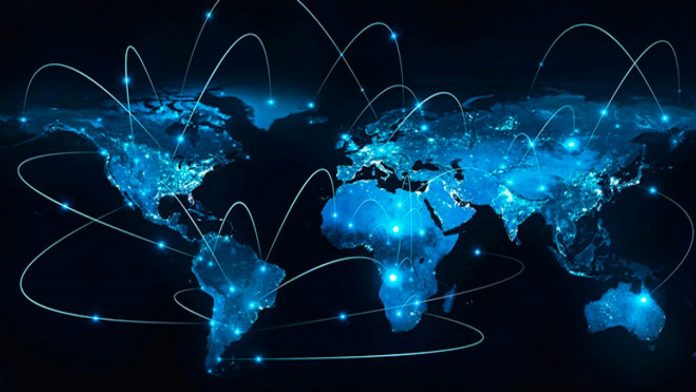This article has been written by Akhilesh Aggarwal pursuing Diploma in Advanced Contract Drafting, Negotiation and Dispute Resolution and has been edited by Oishika Banerji (Team Lawsikho).
This article has been published by Sneha Mahawar.
Table of Contents
Introduction
A legal dispute can arise whenever two or more parties have different interests in mind and cannot come to a common ground. This principle applies to international law as well wherein disputes between states are resolved by the International Court of Justice (ICJ). ICJ was established in 1945 by the United Nations to work as the primary judicial organ of the UN. It is the world’s highest court based in The Hague, Netherlands and has the power to give advisory opinions or settle disputes pertaining to matters of international legal importance. Article 33 of the United Nations Charter provides the methods to be used for settlement of disputes like negotiations, mediations, arbitration, judicial settlement and much more. In the mediation method, parties involved are allowed to solve the dispute amicably amongst themselves. With arbitration, this settlement is subject to the decision that is provided by the third-party which is impartial and the decision therefore dictates a binding statement. Judicial settlement however, is a stricter rule following the method version of arbitration that is followed by the ICJ. This article discusses in detail the ICJ and every other related aspect to it.
History of origin
The Permanent Court of International Justice (PCIJ) was the predecessor of ICJ. PCIJ was established by the League of Nations (United Nations Predecessor) in 1920 for the maintenance of world peace and harmony following the aftermath of World War I. Although it was a permanent institution which was accessible to all the states, its decline after the 1930s and eventually failing to prevent World War II made the leading nations advocate for a new improved court system. The San Francisco Conference of 1945 involving 50 countries adopted the Statute of ICJ, which is based on the Statute of PCIJ.
Membership of International Court of Justice (ICJ)
Tenure and election
The membership of ICJ consists of 15 judges who have a term-period of 9 years with the eligibility of re-election and requirement that each judge must be of a different nation of origin. One-third or 5 members of the Court are elected every three years with the elected candidates having to receive an absolute majority of vote in both the United Nations General Assembly and the Security Council.
Proposal of candidates
When it comes to proposing potential candidates for the members of the ICJ, all the state parties to the Statute of the Court are entitled to make their proposals. However such a proposal cannot be made by the governments of the states involved but is done by members of the Permanent Court of Arbitration (PCA) which is designated by that State. PCA is a group of four individuals who can also serve as members of the Arbitral tribunal under the Hague Conventions of 1899 and 1907. Four nominations can be made by the group, however only two nominations can be made by the group of its own nationality while the rest can range from any country whatsoever.
Nationality and dismissal
The Court is obligated not to include nationals of the same state making each member from a distinct nation of origin. In addition to this, the Court as a whole must represent the principal major legal systems of the world. Once a member is elected, they cease to be a delegate of their own country or any other country. The members of the court have to solemnly declare to remain impartial and to exercise their powers conscientiously. When it comes to dismissal, no member of the Court can be dismissed unless it is a unanimous decision passed by the rest of the members.
Presidency of International Court of Justice (ICJ)
Tenure and election
There is no nationality criteria when it comes to the election of the President and Vice-President. The members of the Court elect both the President and the Vice- President every three years and the election method undertaken is the secret-ballot method. Re-election is allowed as well. For the election process however, an absolute majority needs to be achieved.
Working
Along with supervising and presiding over all the meetings of the Court, the President along with the aid of the Budgetary and Administrative Committees ensure the smooth working of the Court. The Vice-President aids the President and replaces them during their absence or inability to work as the President.
Issues presented before International Court of Justice (ICJ)
The cases brought before ICJ fall into three categories.
Contentious issues
These issues involve disputes that arise between two states. In such cases, the states often represent the issues of its own states’ individuals or organisations concerns as individuals and organisations cannot bring their cases before the ICJ. This practice is called ‘diplomatic protection’.
Incidental issues
These types of cases demand some relief to a party to prevent further harm or to protect the rights of the party. ICJ orders such temporary reliefs and measures which stand valid till the issue at hand is being contested before ICJ.
Advisory issues
This involves the other UN bodies like the United Nations General Assembly (UNGA) or the Security Council (UNSC) to aid them in any matter involving legal interpretation.
Jurisdiction of International Court of Justice (ICJ)
A number of cases seek the aid of ICJ over their matters but the jurisdiction of the ICJ is often put under questions. For cases involving contentious issues, both parties involved often favours ICJ’s aid to resolve the dispute thus ensuring that the parties shall abide by the ruling. ICJ also has Compulsory jurisdiction under which a state agrees to accept the mandatory jurisdiction under curtained defined matters. Therefore, compulsory jurisdiction is voluntary in nature. Article 36 of the Statute lists the nature of the legal dispute under which compulsory jurisdiction can be recognised before the court. This jurisdiction is not very effective as states often tend to exclude themselves from some or the other issues. Further, any and all declarations that have been made by the ICJ and any case involving a state requesting aid with their case also fall under ICJ’s jurisdiction.
ICJ has no enforcement powers therefore in a case where not adhering to the judgement by a state threatens the peace and harmony, the UNSC may take action. UNSC, has been empowered under Article 94 of the UN Charter which states that on the request of the injured state, UNSC can make recommendations or implement special measures to enforce the judgement. Although so far when it comes to the part of the court’s ruling, the whole international community considers it to be valid which makes the states involved more likely to accept the ruling and comply rather than disobeying it and infuriating the international community as well.
Landmark cases before International Court of Justice (ICJ)
ICJ has dealt with a number of cases right from its establishment and have given landmark judgments in the process. Some of them are listed below:
Corfu Channel Case (1947-49)
It dealt with state liability for maritime damages. This case also discussed the theory of innocent passage. In this case, two British Warships had collided with mines in the Corfu Channel in Albanian Sea which resulted in loss and destruction to both life and property. In response to this, the British Navy did a search operation without Albania’s approval in the Albanian sea and also sought for reparations from Albania for the loss incurred. Albania however counter-claimed that the UK had violated its territorial seas.
Decision of the ICJ
Albania had to reimburse the UK for the loss of life and property and was held liable on the grounds that it had continued surveillance of the Channel and therefore such an incident should have been averted.
SS Lotus Case (1926)
This case enabled the states to act in any way they wished for as long as the act did not violate any explicit prohibition. This therefore laid the foundation of international law. This case was a criminal trial wherein a crash between a French steamship and a Turkish vessel resulted in 8 members of the Turkish vessel drowning to their death. The question before the court was whether Turkish courts had the power or the authority to trial the French officer who was on duty at the time of crash.
Decision of the International Court of Justice (ICJ)
Two principles emerged from this case after France’s claim was rejected that cited that the nation whose flag flew over the ship should have the jurisdiction.
- The first principle states that unless a nation is authorised by international treaties or laws, it cannot exercise its jurisdictions outside its defined borders.
- The second principle states that a nation is free to exercise its jurisdictional powers inside its territories to any extent, even without being empowered by an international law.
Nicaragua v. United States of America (1986)
This case is one of the most famous examples of the enforcement powers of the ICJ and the UN. In this case, the Court had ruled that the U.S had supported the rebel groups in Nicaragua as covert-war efforts against the then Nicaraguan government which was a violation of the International Law. The Court ordered the US to pay war reparations to Nicaragua but the US refused to do so and also pulled out from the compulsory jurisdiction. When Nicaragua approached the UNSC for enforcement of the ICJ order, the US vetoed the enforcement action.
Conclusion
The International Court of Justice, right from its time of establishment, has resolved countless conflicts and restored a sense of justice to the international community through different methods and judgements. There is no doubt that the ICJ emerged as a saviour to the legal rights of the international community after two horrific world wars. Over time, ICJ has also adapted itself to the changing domains of international law. More and more cases emerge from newer issues pertaining to environmental law, human rights and so more. With all the changes, it is certain that with interactions amongst states, conflict of opinions and views shall always arise. However, every international conflict can be expressed in legal conflicts including instances where the violations of the law are also justified in legal terms. With ICJ as the central institution, the rule of law shall continue to be the pillar of support that the international community needs to co-exist peacefully. There exists criticisms that claim the existence of bias within ICJ. Further instances like States representing the concerns and representing their individuals concerns are allowed but there is no express mechanism for situations wherein the State support for minorities or the grieved is absent. However, when all ways fail before humanity and humans revert back to war-like mechanisms, international law exists as a last possible resort in such situations. To achieve this, the International Court of Justice is not to be under-estimated as not only the Court carries significant weight of trust in the International community but also has the power to bring about a change.
References
- https://academy4sc.org/video/international-court-of-justice-worlds-highest-court/.
- https://blog.finology.in/Legal-news/landmark-cases-international-law.
- https://www.icj-cij.org/court.
- https://www.icj-cij.org/history
Students of Lawsikho courses regularly produce writing assignments and work on practical exercises as a part of their coursework and develop themselves in real-life practical skills.
LawSikho has created a telegram group for exchanging legal knowledge, referrals, and various opportunities. You can click on this link and join:
Follow us on Instagram and subscribe to our YouTube channel for more amazing legal content.
 Serato DJ Crack 2025Serato DJ PRO Crack
Serato DJ Crack 2025Serato DJ PRO Crack











 Allow notifications
Allow notifications


